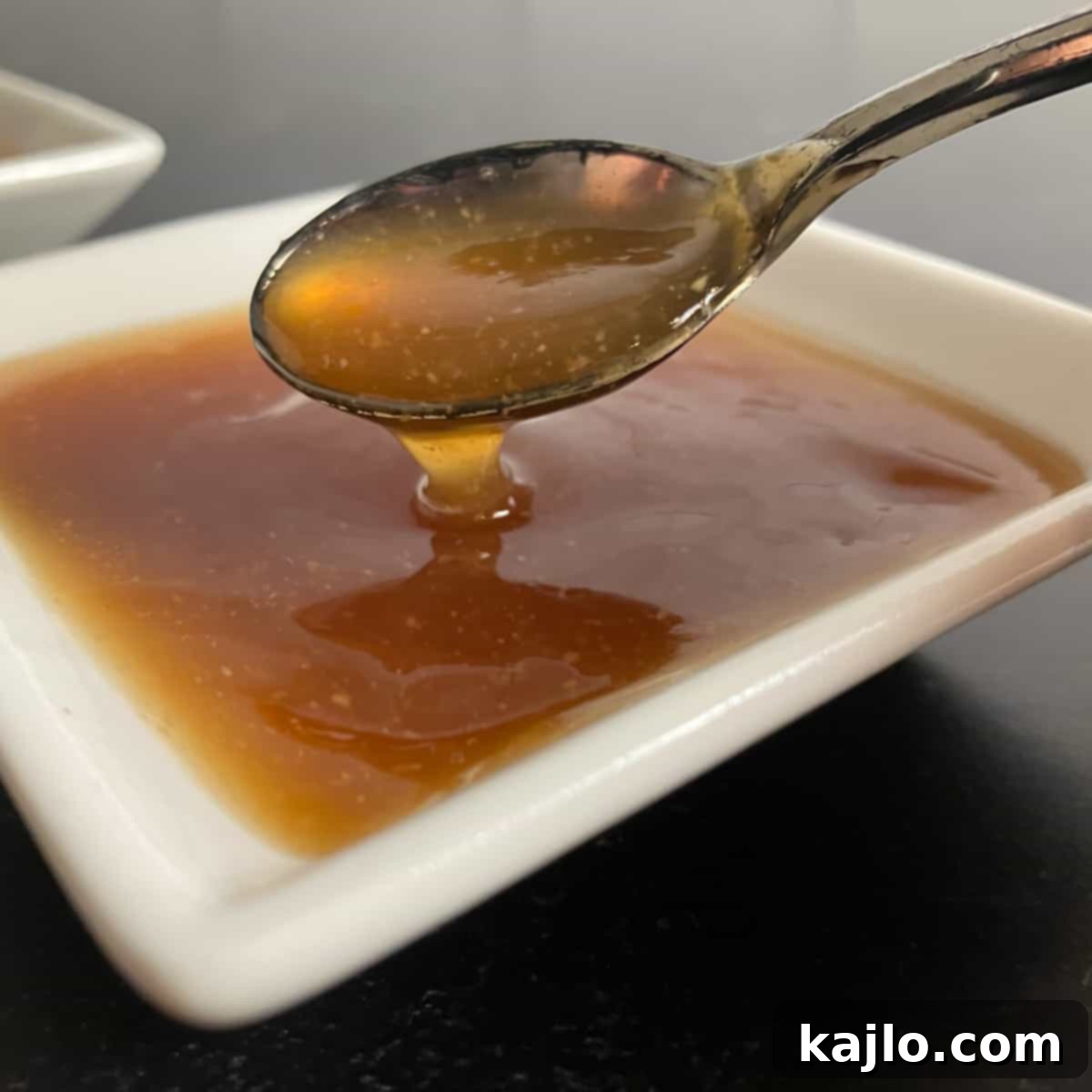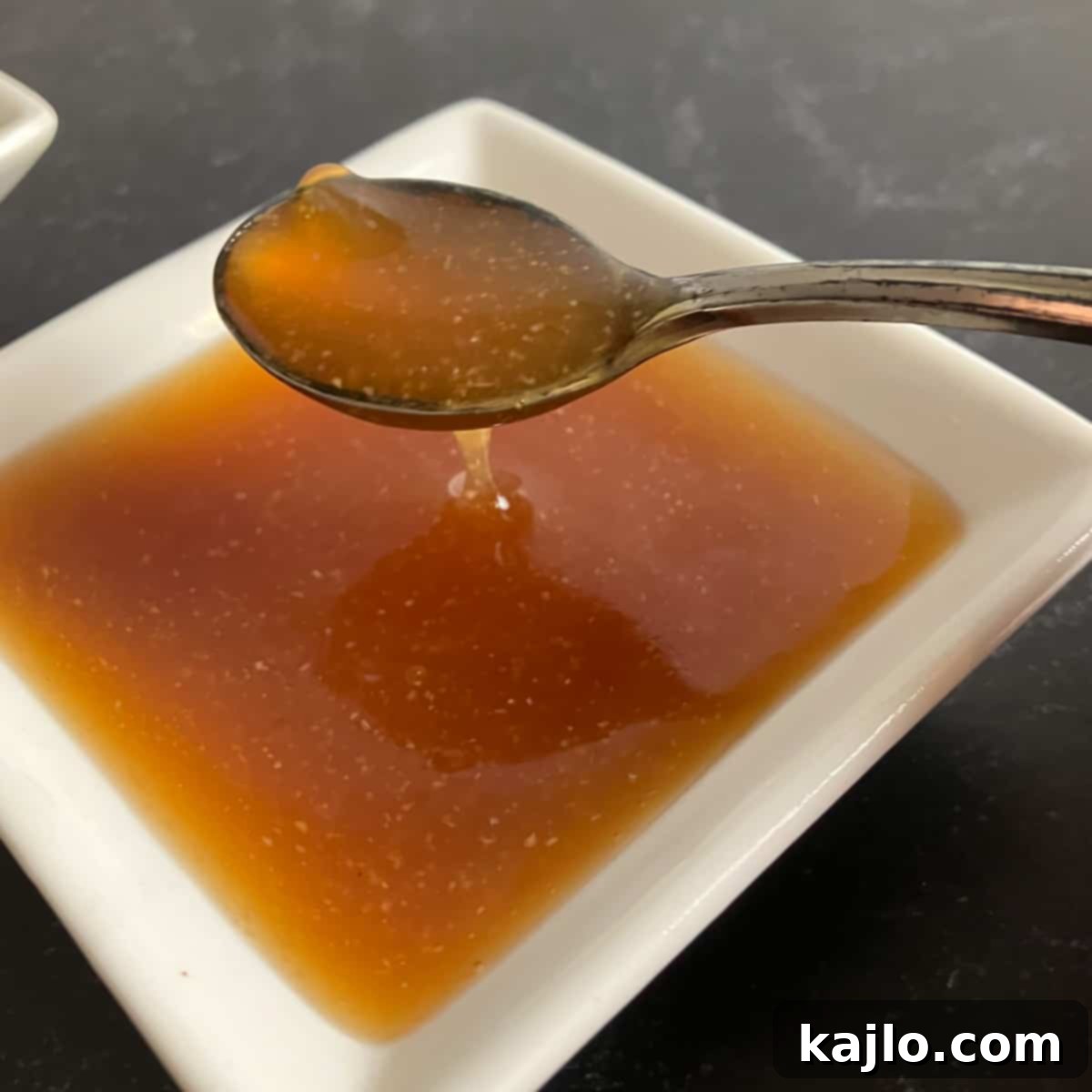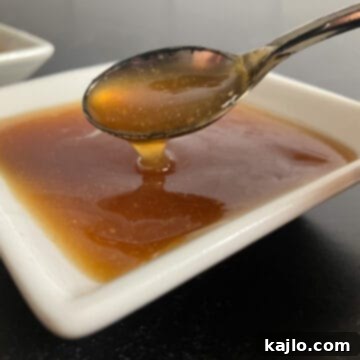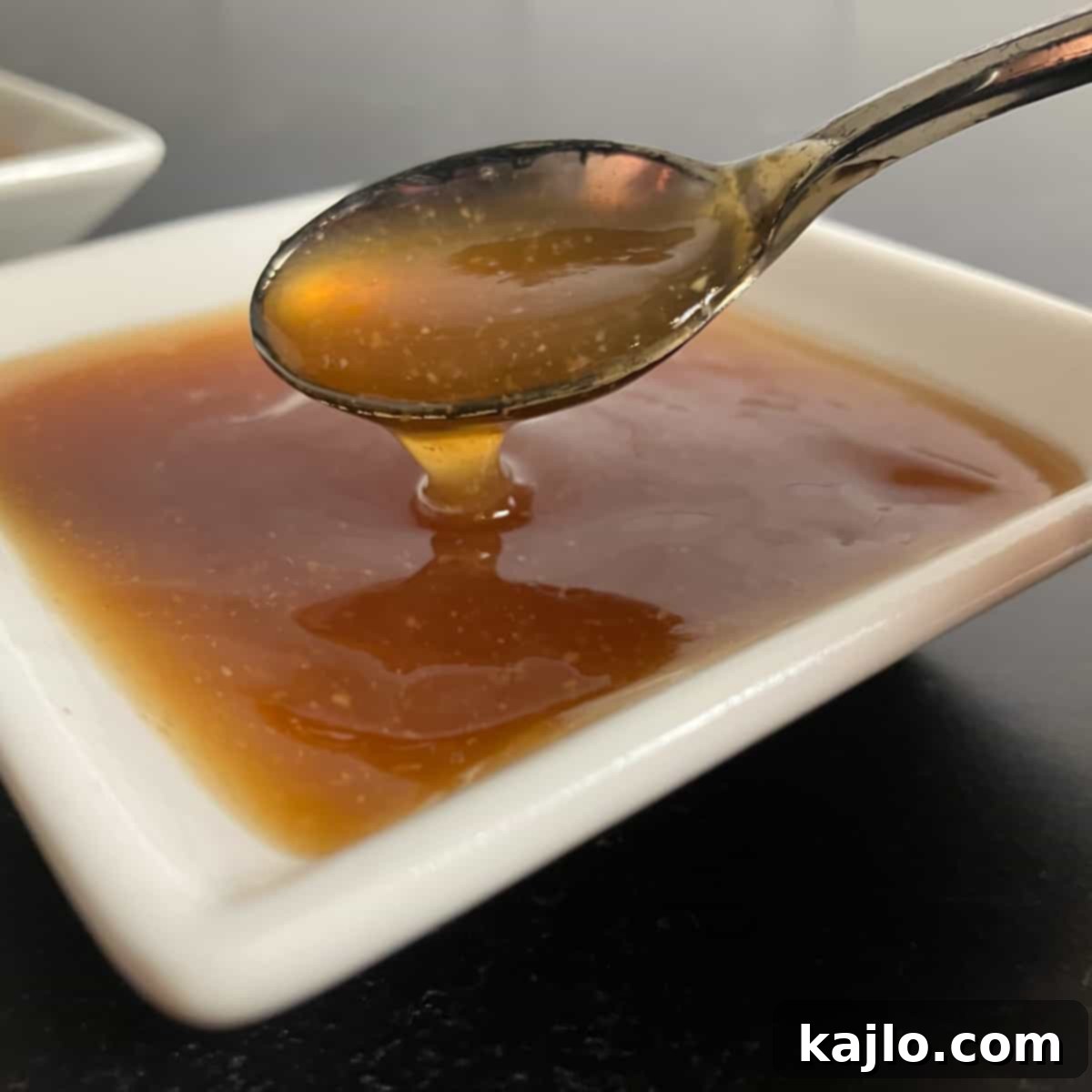The Ultimate Guide to Teriyaki Sauce Substitutes: Homemade Recipes & Alternative Options
Ever found yourself in the middle of preparing a delicious Asian-inspired meal, only to realize you’re out of teriyaki sauce? Don’t let that dampen your culinary spirit! Whether you’re missing this sweet and savory staple, looking for a gluten-free or healthier option, or simply want to experiment with new flavors, finding the perfect teriyaki sauce substitute is easier than you think. This comprehensive guide will walk you through everything you need to know about replacing teriyaki sauce, including a fantastic homemade teriyaki sauce recipe, detailed insights into its core ingredients, and a diverse list of other convenient teriyaki alternatives like hoisin sauce, tamari, BBQ sauce, and more. Say goodbye to last-minute grocery runs and hello to a well-stocked kitchen capable of whipping up an incredible meal with what you already have on hand!

➕ What is Teriyaki Sauce? Understanding Its Unique Flavor Profile
Before we dive into substitutes, it’s helpful to understand what makes teriyaki sauce so distinct. Teriyaki sauce is a cornerstone of American Japanese cuisine, celebrated for its irresistible balance of sweet, savory, and tangy notes, often with a glossy, thick consistency. The term “teriyaki” itself refers to a Japanese cooking method where food is grilled or broiled with a glaze (tare) made from soy sauce, mirin (sweet rice wine), sugar, and sake (rice wine).
The traditional Japanese teriyaki glaze is typically thin and used to brush on meat or fish during cooking, creating a beautiful shine (“teri”) and flavor (“yaki”). Over time, especially in Western adaptations, teriyaki sauce evolved into a thicker, richer condiment, frequently featuring additional ingredients like ginger, garlic, and cornstarch for thickening. This versatility makes it ideal for marinades, glazes, dipping sauces, and stir-fries.
Its main components each play a crucial role in its signature taste:
- Soy Sauce: Forms the salty, umami-rich base, providing depth and a fundamental savory characteristic.
- Mirin: A sweet rice wine that contributes a unique, subtle sweetness and a distinct aroma, often described as a mild, slightly fermented flavor.
- Sugar: (Often brown sugar or granulated sugar) enhances the sweetness and helps achieve that desirable caramelized glaze.
- Sake: Another type of rice wine, it adds a layer of depth and helps tenderize meats. While traditional, it’s often omitted in simpler recipes or replaced with other liquids.
- Ginger & Garlic: Common additions in many modern teriyaki recipes, offering aromatic pungency and a spicy kick that elevates the sauce’s complexity.
- Rice Vinegar: Introduces a slight tanginess, crucial for balancing the sweetness and richness, preventing the sauce from becoming cloying.
- Cornstarch: A thickener often used in commercial or homemade versions to achieve that viscous, coating consistency perfect for glazes and stir-fries.
Understanding these elements is key to creating an effective and delicious teriyaki sauce replacement that captures the essence of the original.
⭐ The Best Teriyaki Sauce Substitutes for Any Occasion
Don’t have teriyaki sauce on hand? No problem! Whether you’re in a pinch or seeking a specific dietary alternative, there are numerous excellent teriyaki sauce substitutes that can save your meal. From crafting your own blend from scratch to leveraging other popular Asian sauces, you have a variety of options to ensure your dish is flavorful and satisfying. Here’s a comprehensive list of the top alternatives to teriyaki sauce, each offering a unique twist while delivering a taste reminiscent of the original:
- Homemade Teriyaki Sauce Recipe: The ultimate customizable option.
- Soy Sauce: A foundational ingredient that can be built upon.
- Hoisin Sauce: A sweet and savory Chinese staple.
- Oyster Sauce: Rich, umami, and slightly sweet.
- Korean BBQ Sauce: Offers a similar sweet and savory profile with an added zing.
- Ponzu: A citrusy Japanese sauce for a lighter touch.
- Tamari: The gluten-free sibling of soy sauce.
- Mirin: A sweet rice wine, perfect for enhancing sweetness and authenticity.
- Coconut Aminos: A soy-free, gluten-free, and often lower-sodium alternative.
- Bulgogi Sauce (or Kalbi Sauce): Another Korean marinade with a distinct flavor.
- Worcestershire Sauce: A surprisingly versatile option in a pinch.
Homemade Teriyaki Sauce: Your Best Bet for an Authentic Taste
When you want to replicate the exact flavors of teriyaki sauce, making your own at home is the ideal solution. Not only does it give you control over the ingredients, but it also ensures freshness and allows for customization to suit your palate or dietary needs. This DIY teriyaki sauce combines key components for that perfect sweet, savory, and sticky glaze, often coming together faster than a trip to the store!
To create a classic homemade teriyaki sauce, you’ll typically combine a soy sauce base with sweeteners like sugar or honey, aromatic agents like ginger and garlic, and a touch of acid like rice vinegar. A cornstarch slurry is often added to achieve the desired thick, glossy consistency, turning it from a thin marinade into a rich glaze perfect for coating your favorite dishes.
Homemade Teriyaki Sauce Recipe Ingredients:
- 2 tablespoons reduced sodium soy sauce
- 1/3 cup water
- 1 tablespoon rice vinegar
- 2 tablespoons light brown sugar (packed)
- 1 tablespoon honey
- ¼ teaspoon garlic powder (or 1 clove minced fresh garlic)
- ¼ teaspoon ground ginger (or ½ teaspoon grated fresh ginger)
- 1 tablespoon cornstarch whisked with 2 tablespoons cold water (this is your cornstarch slurry)

You’ll find a printable version of this recipe with full nutritional information at the end of this post!
Step-by-Step Instructions to Make Your Easy Teriyaki Sauce Alternative:
- Combine Ingredients (Except Slurry): In a small saucepan, whisk together the reduced sodium soy sauce, water, rice vinegar, light brown sugar, honey, garlic powder, and ground ginger. Place the saucepan over medium heat.
- Simmer and Thicken: Allow the mixture to come to a gentle simmer, whisking occasionally until the sugar and honey have fully dissolved. Once simmering, slowly whisk in the cornstarch slurry. Continue to heat and whisk constantly for 1-2 minutes, or until the sauce visibly thickens to your desired consistency. Be careful not to let it boil vigorously, as this can break down the starch. If the sauce becomes too thick, you can thin it out with a teaspoon or two of water. Remove from heat and enjoy immediately or store for later use.

Soy Sauce: The Foundation of Teriyaki
Soy sauce is a primary component of teriyaki, making it an excellent starting point for a simple teriyaki sauce replacement. While plain soy sauce lacks the sweetness and thickness of teriyaki, it provides the essential umami and saltiness.
How to use: To transform soy sauce into a credible teriyaki alternative, you’ll need to add sweetness and other flavor enhancers. Combine soy sauce with a sweetener such as brown sugar, honey, or maple syrup. For added depth, whisk in a dash of ground ginger and garlic powder (or minced fresh ginger and garlic). If you desire the signature thick glaze, incorporate a cornstarch slurry (1 tablespoon cornstarch mixed with 2 tablespoons cold water) and heat until thickened. A splash of rice vinegar can also add a balancing tang. For a shortcut, kecap manis (sweet soy sauce), an Indonesian condiment, already contains sweetener and a thicker consistency, making it a very convenient substitute.
Best for: Marinades, light stir-fries, or as a dipping sauce with added sweetness.
Hoisin Sauce: The Sweet and Savory Chinese Cousin
Hoisin sauce is a thick, fragrant, and intensely flavorful Chinese condiment often called “Chinese BBQ sauce.” It shares many characteristics with teriyaki sauce, including a prominent sweet and savory profile, thanks to ingredients like fermented soybean paste, garlic, vinegar, and various spices.
How to use: Hoisin sauce can be used as a direct teriyaki sauce substitute due to its similar consistency and flavor balance. However, it tends to be richer and slightly more complex, with notes of five-spice powder. If you find it too robust, you can dilute it with a little water or soy sauce to achieve a closer consistency and milder flavor. A small amount of rice vinegar can also brighten its profile to match teriyaki more closely.
Best for: Glazes for grilled meats (especially chicken or ribs), stir-fries, and dipping sauces. It’s particularly good where a deeper, richer flavor is desired.
Oyster Sauce: Rich Umami and Savory Sweetness
Oyster sauce is a thick, viscous, and savory sauce commonly used in Cantonese cuisine. Made from oyster extracts, soy sauce, and sugar, it delivers a deeply umami flavor with a noticeable sweetness, making it a viable teriyaki sauce alternative.
How to use: While oyster sauce provides a wonderful savory foundation, it’s typically less sweet and tangy than teriyaki. To use it as a substitute, you’ll want to adjust the sweetness by adding a bit of brown sugar, honey, or even a splash of mirin. A hint of rice vinegar or lemon juice can introduce the necessary tanginess. Its natural thickness makes it excellent for glazes and stir-fries without needing additional cornstarch.
Best for: Stir-fries, marinades, and any dish where a rich, savory, and slightly sweet flavor is desired. It pairs exceptionally well with beef, chicken, and vegetables.
Korean BBQ Sauce: A Sweet, Savory, and Often Spicy Twist
Korean barbecue sauce shares a fundamental sweet and savory profile with teriyaki, making it a compelling alternative. However, it often features distinct flavors from ingredients like gochujang (Korean chili paste), sesame oil, and Asian pear or apple puree, giving it a unique fruity sweetness and sometimes a spicy kick.
How to use: You can often use Korean BBQ sauce as a direct teriyaki substitute, especially if you enjoy a more complex and potentially spicier flavor. If the sauce is too spicy or has a very strong sesame flavor for your dish, you can dilute it slightly with a little soy sauce or water. Taste and adjust sweetness with a pinch of sugar if needed. Its thickness is usually suitable for marinades and glazes.
Best for: Grilling, marinating meats (especially beef and pork), stir-fries, and even as a flavorful dipping sauce. Choose this when you’re open to a slight departure from classic teriyaki flavor but want a similar sweet-savory function.
Ponzu: The Zesty Japanese Alternative
Ponzu is a light, tangy, and savory citrus-based sauce widely used in Japanese cuisine. While it’s primarily known for its refreshing tartness, it contains soy sauce, making it a potential base for a teriyaki sauce alternative with a brighter, zestier profile.
How to use: To convert ponzu into a teriyaki substitute, you’ll need to add a significant amount of sweetness and potentially some thickening. Combine ponzu with sugar, honey, or mirin to achieve the desired sweetness. A small amount of garlic and ginger can be added for aromatic complexity. If a thicker glaze is required, a cornstarch slurry will do the trick. The result will be a lighter, more citrusy teriyaki-like sauce.
Best for: Seafood, chicken, salads, or lighter stir-fries where a less heavy, more vibrant flavor is desired. It also works well as a dipping sauce when sweetened.
Tamari: The Gluten-Free Teriyaki Base
Tamari is a Japanese soy sauce variety that is typically made with little to no wheat, making it an excellent gluten-free soy sauce substitute and, by extension, a suitable base for a gluten-free teriyaki sauce substitute. Its flavor is generally richer and less salty than standard soy sauce.
How to use: Like regular soy sauce, tamari needs added sweetness, tanginess, and thickness to mimic teriyaki. Combine tamari with a gluten-free sweetener (such as brown sugar, honey, or maple syrup), a splash of rice vinegar, and optionally, ground ginger and garlic powder. For thickness, use a cornstarch slurry or arrowroot powder slurry (ensure both are gluten-free). This makes it perfect for those with celiac disease or gluten sensitivities who still crave teriyaki flavors.
Best for: Any recipe calling for teriyaki sauce, especially for those following a gluten-free diet. It’s versatile for marinades, stir-fries, and glazes.
Mirin: Boosting Authenticity and Sweetness
Mirin is a sweet Japanese rice wine, and a crucial ingredient in traditional teriyaki sauce. Its naturally sweet and slightly tangy flavor contributes significantly to the characteristic taste of teriyaki. While not a standalone substitute, it’s an excellent enhancer.
How to use: Mirin works best when combined with soy sauce to form a basic teriyaki base. Mix equal parts mirin and soy sauce, then add a small amount of sugar or honey if you prefer a sweeter profile, and include ginger and garlic for aromatics. While mirin adds sweetness, it doesn’t add thickness, so you’ll need a cornstarch slurry if you want a glaze. This combination creates a very authentic teriyaki sauce replacement.
Best for: Enhancing the flavor of a soy sauce-based substitute, particularly when aiming for a more traditional Japanese teriyaki taste. Great for marinades and as a component in homemade sauces.
Coconut Aminos: The Soy-Free and Gluten-Free Champion
Coconut aminos is a popular condiment for those avoiding soy and gluten. Made from the sap of coconut trees, it has a naturally sweet and salty flavor that makes it an excellent, healthier alternative to soy sauce, and a fantastic base for a diet-friendly teriyaki sauce substitute.
How to use: Coconut aminos are inherently sweeter and less salty than soy sauce, so they already bring some of teriyaki’s desired qualities. To make it a teriyaki substitute, simply add a bit more sweetener (such as brown sugar or honey), rice vinegar for tang, and aromatics like ginger and garlic. If you need it thicker, a cornstarch or arrowroot powder slurry (ensuring it’s gluten-free) can be used. It’s a fantastic option for paleo, keto, and Whole30 diets, depending on the added sweeteners.
Best for: Anyone with soy or gluten allergies/sensitivities, or those seeking a lower-sodium option. Excellent for marinades, stir-fries, and as a dipping sauce with a clean, slightly sweet flavor profile.
Bulgogi Sauce (and Kalbi Sauce): Korean Marinade Excellence
Bulgogi sauce and Kalbi sauce are flavorful Korean marinades typically made with soy sauce, sugar, sesame oil, garlic, ginger, and sometimes fruit purees like pear or apple. They share the sweet and savory characteristics of teriyaki, but with a distinct Korean twist, often including a nutty sesame flavor and deeper aromatic notes.
How to use: These sauces can serve as a direct teriyaki replacement, especially for marinating meats. While they have a slightly different flavor profile (often richer and more savory with a distinct sesame presence), they offer a similar function. If you want to bring them closer to teriyaki, you might add a touch more rice vinegar for tang or a bit more sugar for increased sweetness, depending on your preference and the brand.
Best for: Marinating beef, chicken, or pork for grilling or stir-frying. Ideal when you’re looking for a sweet and savory sauce that brings a unique East Asian flavor to your dish.
Worcestershire Sauce: The Unexpected Umami Booster
Worcestershire sauce might seem like an unconventional choice, but this fermented condiment boasts a complex, tangy, savory, and slightly sweet flavor profile that can surprisingly work as a teriyaki sauce substitute in a pinch. Its deep umami notes come from ingredients like anchovies (though vegan versions exist), tamarind, molasses, and spices.
How to use: Given its strong flavor, Worcestershire sauce should be used as a base and balanced with other ingredients. Combine it with an equal part of soy sauce (or tamari/coconut aminos for dietary needs), then add a generous amount of sweetener like brown sugar or honey to achieve teriyaki’s characteristic sweetness. Minced garlic and ginger are essential to bring in those missing aromatic elements. You may also want to add a dash of rice vinegar to round out the flavor and a cornstarch slurry for thickness.
Best for: When you truly have nothing else, or as a base for a rich marinade. It lends a deep savory flavor, but requires more doctoring to truly mimic teriyaki.
By exploring these diverse teriyaki sauce substitutes, you can confidently create delicious dishes without compromising on flavor, even when teriyaki sauce isn’t readily available. Each option offers a unique way to bring that beloved sweet and savory essence to your cooking.
Frequently Asked Questions About Teriyaki Sauce & Substitutes
How to best use teriyaki sauce in cooking?
Teriyaki sauce is incredibly versatile and can be used in numerous ways to add flavor and gloss to your dishes. Its most common applications include:
- Marinades: It’s a classic marinade for meats like chicken, beef, pork, and seafood. Allow items to marinate for at least 30 minutes, or up to several hours for deeper flavor, before grilling, baking, or pan-frying.
- Glazes: Brush teriyaki sauce onto proteins or vegetables during the last few minutes of cooking to create a beautiful, caramelized glaze. This is perfect for grilled chicken skewers, salmon fillets (like Air Fryer Teriyaki Salmon), or roasted vegetables.
- Stir-fries: Add teriyaki sauce towards the end of stir-frying to coat all ingredients evenly. It adds a burst of flavor and a lovely sheen.
- Dipping Sauce: Serve it on the side for spring rolls, dumplings, chicken nuggets, or even as a flavorful condiment for burgers and sandwiches.
- Dressings: Thin it out slightly with a little water or oil and use it as a base for a salad dressing, especially for Asian-inspired salads.

What other sauces taste similar to teriyaki?
Teriyaki sauce is characterized by its sweet, savory, and umami-rich flavor profile, often with a hint of ginger and garlic. Sauces that share a similar taste usually combine these elements. Besides a well-made homemade teriyaki replacement (like the one above made from soy sauce, sweetener, and rice vinegar), several commercial sauces offer a comparable experience:
- Kecap Manis (sweet soy sauce): This Indonesian condiment is naturally sweeter and thicker than regular soy sauce, providing a good base for teriyaki flavors.
- Korean BBQ Sauce: Many Korean BBQ sauces offer a similar sweet and savory balance, though they often include sesame oil and sometimes a touch of spice, adding a unique depth.
- Hoisin Sauce: A Chinese sauce known for its robust sweet and savory flavors, often used as a glaze for roasted meats, making it very similar in application and taste profile.
- Oyster Sauce: While not as sweet as teriyaki, it offers significant umami and savory notes with a hint of sweetness, which can be adjusted to match teriyaki more closely.
What is the key difference between teriyaki and soy sauce?
While soy sauce is a fundamental ingredient in teriyaki sauce, they are distinct condiments used for different purposes. The primary differences lie in their flavor profile, consistency, and intended use:
- Flavor: Soy sauce is predominantly salty and umami-rich. Teriyaki sauce, on the other hand, is a multi-layered sauce that balances the saltiness of soy sauce with significant sweetness (from sugar, mirin, or honey), tanginess (from vinegar or sake), and often aromatic notes (from ginger and garlic).
- Consistency: Soy sauce is thin and watery. Teriyaki sauce is typically thicker and more viscous, especially in its modern form, often due to the addition of cornstarch or the reduction of sugars, which creates a syrupy glaze.
- Use: Soy sauce is primarily used as a seasoning, a base for dipping sauces, or a component in marinades. Teriyaki sauce is designed to be a glaze, marinade, or finishing sauce that adheres to food, adding both flavor and a glossy appearance.
Can you substitute teriyaki sauce for soy sauce?
Yes, you can substitute teriyaki sauce for soy sauce in many recipes, but it’s important to be aware that it’s not a direct, one-to-one replacement, and adjustments will be necessary. Since teriyaki sauce is significantly sweeter, thicker, and more complex in flavor than soy sauce, using it directly will alter the taste and texture of your dish. When making this swap, consider the following:
- Sweetness: Teriyaki sauce will add a noticeable sweetness to your dish. You might need to reduce other sweet ingredients in the recipe or embrace the sweeter outcome.
- Saltiness: While it contains soy sauce, teriyaki’s saltiness is balanced by its sweetness. You may need to add a pinch more salt to your dish if it requires the robust saltiness that plain soy sauce provides.
- Thickness: Teriyaki sauce is typically thicker. This might be beneficial for glazes or stir-fries, but could be too heavy for lighter dressings or marinades where a thin consistency is preferred. You can thin it with a little water or broth if needed.
In short, use teriyaki sauce instead of soy sauce if you’re comfortable with a sweeter, potentially thicker, and more flavored result, or if you’re prepared to adjust other ingredients in your recipe accordingly.
How to make a simple 3-ingredient teriyaki sauce?
For a quick and easy teriyaki sauce with minimal ingredients, you can combine a few key components to capture its essence. The simplest version typically focuses on the core sweet, salty, and umami flavors. Here’s how:
Ingredients:
- Soy Sauce: The salty, umami base.
- Sugar: (Brown sugar or granulated sugar) for sweetness and caramelization.
- Mirin: (Sweet Japanese rice wine) for unique sweetness and aroma, or a suitable substitute like white cooking wine or Shaoxing rice wine if mirin is unavailable.
Instructions:
Combine equal parts of soy sauce, sugar, and mirin in a small saucepan. For instance, start with ¼ cup of each. Whisk the ingredients together over medium heat until the sugar fully dissolves and the sauce begins to gently simmer. Continue to cook for a few minutes until it slightly reduces and thickens to a light glaze. You can adjust the ratio of ingredients based on your taste preferences – more sugar for sweeter, more soy sauce for saltier. This simplified version won’t be as thick or complex as a full recipe but delivers a fantastic basic teriyaki flavor.
How to make teriyaki sauce without cornstarch?
If you prefer to avoid cornstarch due to dietary restrictions or simply don’t have it, there are several ways to thicken teriyaki sauce naturally or using alternative thickeners:
- Reduction: The simplest method is to simmer the sauce longer over medium-low heat. As the liquid evaporates, the sauce will naturally concentrate and thicken. This process also deepens the flavors. Be patient, and stir frequently to prevent scorching.
- Arrowroot Powder: This is an excellent gluten-free alternative to cornstarch. Mix 1 tablespoon of arrowroot powder with 2 tablespoons of cold water to create a slurry. Add this slurry slowly to your simmering teriyaki sauce, whisking constantly, until it reaches your desired thickness. Arrowroot creates a very clear, glossy sauce.
- Xanthan Gum: A powerful thickener, only a very tiny amount (e.g., ¼ teaspoon per cup of liquid) is needed. Sprinkle it gradually while whisking vigorously, as it thickens almost instantly. Use sparingly to avoid a gummy texture.
- All-Purpose Flour: For a non-gluten-free option, you can create a flour slurry (1 tablespoon flour mixed with 2-3 tablespoons cold water). Add it to the simmering sauce and cook for a few minutes to cook out the raw flour taste. The sauce will be less clear than with cornstarch or arrowroot.
What is the best teriyaki sauce for stir fry?
The ideal teriyaki sauce for stir-fry strikes a perfect balance of sweet and savory flavors, with a consistency that’s thick enough to coat ingredients but not so thick that it becomes clumpy. It should infuse your stir-fry with a glossy sheen and rich aroma.
- Homemade Teriyaki Sauce: Making your own, like the recipe provided earlier, gives you ultimate control over flavor and consistency. You can adjust the sweetness, saltiness, and the amount of cornstarch to perfectly suit your stir-fry ingredients and personal preference. This often yields the freshest and most vibrant flavor.
- High-Quality Store-Bought Sauces: If convenience is key, look for well-regarded brands. Many cooks favor Kikkoman Teriyaki Glaze for its consistent quality and balanced flavor. Other popular brands like Soy Vay or Mr. Yoshida’s also offer excellent options. Read labels to find sauces with natural ingredients and minimal additives.
- Flavor Enhancements: To elevate any teriyaki sauce for stir-fry, consider adding fresh aromatics like grated ginger, minced garlic, or a dash of sesame oil. For a fruity note, a splash of pineapple juice can be wonderful. A pinch of red chili flakes can introduce a pleasant heat.
Ultimately, the “best” sauce is one you enjoy and that complements your chosen stir-fry ingredients. Don’t hesitate to experiment with different brands or your own homemade variations to find your personal favorite!
👩🏻🍳 Explore More Recipe Substitutes
Discover other helpful ingredient swaps and culinary alternatives to make your cooking even more flexible and fun:
- Applesauce Substitute
- Popcorn Alternatives
- Garlic Salt Substitute
- Vegan Substitute for Mascarpone
- Corn Flour Substitute
- Coconut Sugar Substitute
- Best Salsa Substitutes
Watch How to Make It!
(Video coming soon!)

Homemade Teriyaki Sauce Substitute (Best Replacement for Teriyaki Sauce)
Summer Yule
Print Recipe
Pin Recipe
Ingredients
- 2 tablespoons reduced sodium soy sauce
- 1/3 cup water
- 1 tablespoon rice vinegar
- 2 tablespoons light brown sugar (packed)
- 1 tablespoon honey
- ¼ teaspoon garlic powder
- ¼ teaspoon ginger powder
- cornstarch slurry (1 tablespoon cornstarch whisked with 2 tablespoons cold water)
Instructions
- Whisk together all of the ingredients except the cornstarch slurry in a saucepan over medium heat.
- When the sauce starts to simmer, whisk in the slurry and continue heating and whisking until thickened. (It won’t take long!) It’s okay to add a little more water if it gets too thick. Enjoy!
Equipment
- Whisk
- Pot
Notes
💭 Expert Tips from Dietitian Summer Yule
This is a level 3 recipe (weight maintenance and active lifestyles). Is teriyaki sauce healthy? Teriyaki sauce, as well as most teriyaki alternatives, tend to be high in sodium and added sugar. In short, they’re not the most nutritious condiment options.
To make a healthy substitute for teriyaki sauce, try my sugar free teriyaki sauce recipe. It’s also vegan, low carb, and keto (if you need one of those options).
To make a healthier teriyaki sauce, I replaced the sugar with a sugar-free sweetener (like Swerve). To cut back on the salt, I used reduced sodium soy sauce. You can also make those swaps in the recipe above if you’d prefer to adjust for your dietary needs.
Nutrition information is for one serving.
nutrition info disclaimer
All recipes on this website may or may not be appropriate for you, depending on your medical needs and personal preferences. Consult with a registered dietitian or your physician if you need help determining the dietary pattern that may be best for you.
The nutrition information is an estimate provided as a courtesy. It will differ depending on the specific brands and ingredients that you use. Calorie information on food labels may be inaccurate, so please don’t sweat the numbers too much.
“To taste” means to your preferences, which may have to be visual to follow food safety rules. Please don’t eat undercooked food x
Nutrition
Carbohydrates: 8.7g
Protein: 0.5g
Fat: 0.1g
Sodium: 192mg
Fiber: 0.1g
Calcium: 0.2% DV
Iron: 0.5% DV
Join our community! Subscribe for all of the latest and greatest recipes, and follow me on Facebook, Pinterest, Instagram, and YouTube!
